Don't wanna be here? Send us removal request.
Text
0 notes
Text
Top 10 Fashion Designers in Hyderabad: The Ultimate Style Guide
Hyderabad has transformed from being merely known as the city of pearls — it has evolved into a dynamic fashion hub where tradition intertwines with modern style. With an increasing number of skilled designers, Hyderabad has established a unique identity within India’s fashion domain. Whether you're on the hunt for a bridal lehenga, trendy fusion attire, or classic handloom pieces, the city provides options for every preference and event.
This comprehensive style guide showcases the leading best fashion designers in Hyderabad whose imaginative designs and refined craftsmanship are shaping the fashion landscape in 2025. 1. Sowmya Reddy Fashion Studio – Effortless Elegance Meets Enduring Design Sowmya Reddy is celebrated for her contemporary ethnicwear, which harmoniously combines tradition and minimalism. Her studio appeals to women seeking sophisticated outfits that radiate elegance without excessive embellishments. Her creations are perfect for modern brides, festive celebrations, and stylish family occasions.
Style Focus: Delicate embroidery, flowing lehengas, and chic festive ensembles
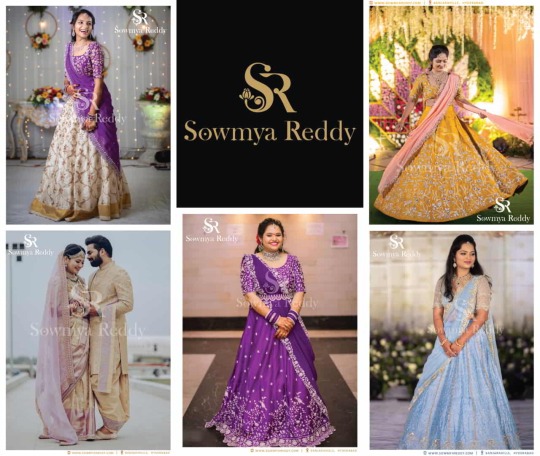
2. 6E Design – Tailored Fashion for the Contemporary Man Men’s fashion in Hyderabad is undergoing a stylish transformation, and 6E Design is leading the way. Specializing in bespoke menswear, the brand is recognized for its precise tailoring, modern cuts, and premium fabric selections. Whether it’s a sherwani for a wedding or a fitted blazer for a formal event, 6E Design provides impeccable style and craftsmanship.
Style Focus: Tailored suits, contemporary sherwanis, and wedding attire for men
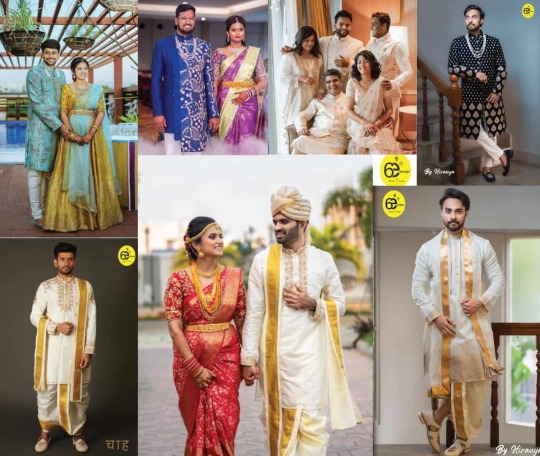
3. SixFingers Design Studio – Where Imagination Knows No Limits SixFingers Design Studio injects a creative spirit into Hyderabad’s fashion scene. Renowned for exploring the limits of fabric, texture, and shapes, this label appeals to the adventurous and artistic. With a reputation for conceptual designs, SixFingers is ideal for those who wish to make a bold fashion statement.
Style Focus: Conceptual fashion, artistic silhouettes, and fusion styles
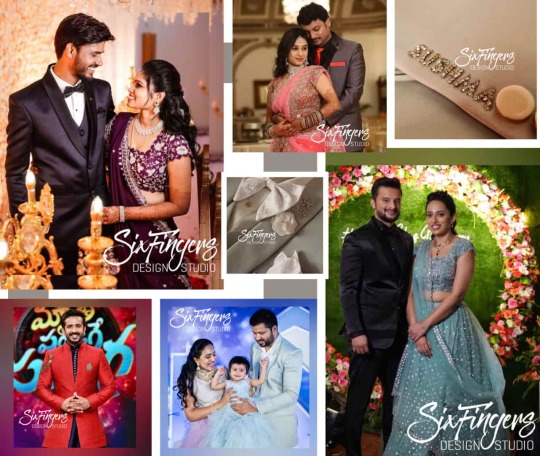
4. Haritha Designer Studio – Embracing Everyday Ethnic Elegance Haritha Designer Studio is cherished for its diverse ethnic collections that marry comfort with style. From intricately embroidered kurtas to festive sarees and lehengas, the brand serves women of all ages who desire sophisticated yet practical ethnic wear.
Style Focus: Festive ethnic fashion, everyday elegance, and fusion outfits
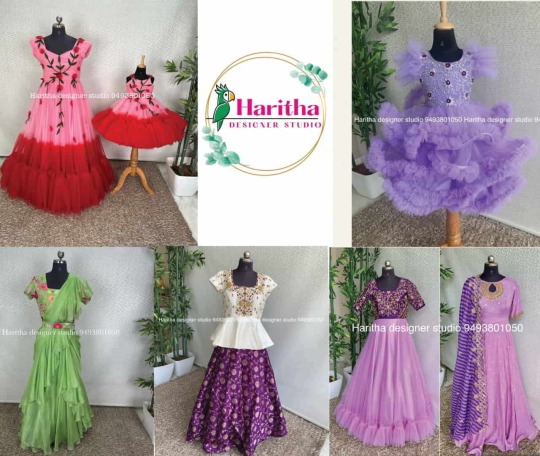
5. Deepthi Ganesh Label – Opulent Bridal & Occasion Attire Deepthi Ganesh’s label embodies high-glamour fashion. Her bridal lines showcase luxurious fabrics, dramatic silhouettes, and modern embellishments tailored for the contemporary bride. From extravagant lehengas to party-ready gowns, her designs are breathtaking pieces of wearable art.
Style Focus: Bridal couture, cocktail dresses, and modern ethnicwear
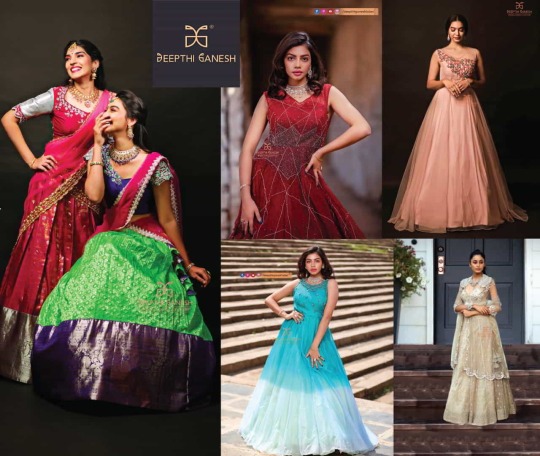
6. Harika Rao – Designer Fashion Studio – Stylish, Contemporary & Custom Harika Rao’s studio presents a modern interpretation of traditional Indian attire. Featuring clean lines, tailored silhouettes, and trendsetting designs, the label is perfect for women seeking fashionable ethnicwear with a global flair. Whether it’s for a wedding, sangeet, or festive celebration, Harika Rao’s creations are sure to captivate.
Style Focus: Modern lehengas, Indo-western outfits, and personalized festive attire.
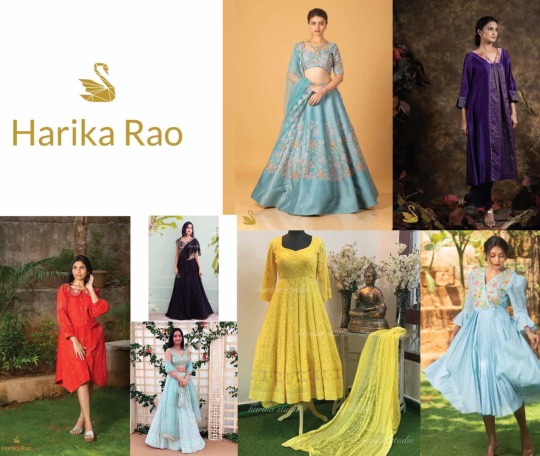
7. Issa Studio– Elegance in Every Stitch Issa Studio is celebrated for its elegant, high-caliber fashion that blends Indian heritage with contemporary sophistication. The brand emphasizes exquisite detailing, luxurious materials, and adaptable silhouettes that transition seamlessly from festive gatherings to evening events.
Style Focus: Chic ethnic wear, modern sarees, and tailored ensembles
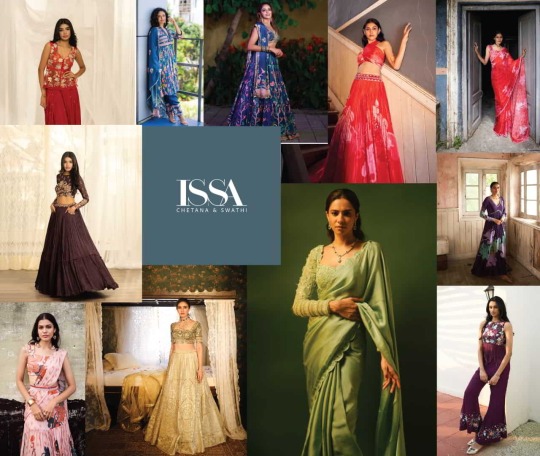
8. Ashwini Reddy – Feminine, Majestic & Rich in Details Ashwini Reddy’s designs beautifully harmonize tradition with cutting-edge style. Her garments showcase delicate adornments, intricate embroidery, and refined cuts. Her brand is particularly favored by brides and style-savvy women who value opulent Indian couture.
Style Focus: Soft hues, embroidered lehengas, and graceful sarees
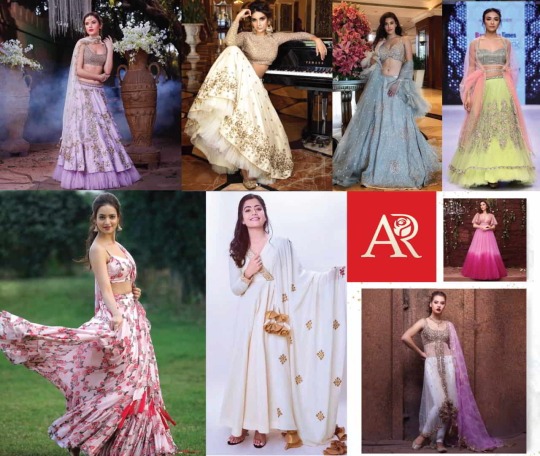
9. Jayanti Reddy Design Studio – Mastery at Its Best Jayanti Reddy stands as a beacon of traditional luxury fashion. Her creations are deeply rooted in Indian heritage, highlighting handwoven textiles and artisanal craftsmanship. Renowned for rich jewel tones and structured sophistication, her brand is a premier choice for brides and those in search of timeless elegance.
Style Focus: Handloom lehengas, sumptuous textures, and majestic silhouettes
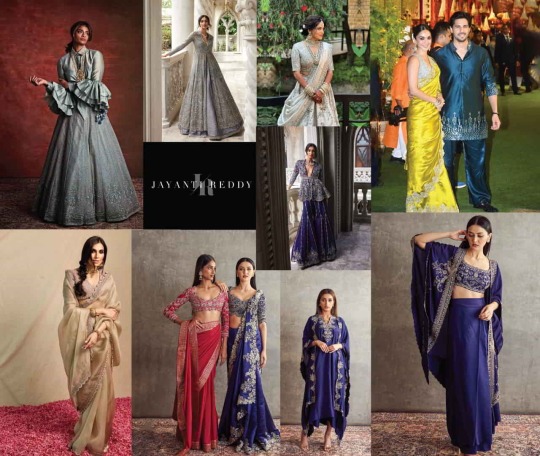
10. Shyamal & Bhumika – Distinguished Indian Couture for Grand Celebrations Though hailing from Ahmedabad, Shyamal & Bhumika have made a remarkable mark in Hyderabad with their regal and intricately detailed couture. Their bridal lehengas, lavishly embroidered jackets, and vintage-inspired designs are ideal for women desiring timeless beauty with a royal touch.
Style Focus: Heritage bridal attire, embellished couture, vintage allure
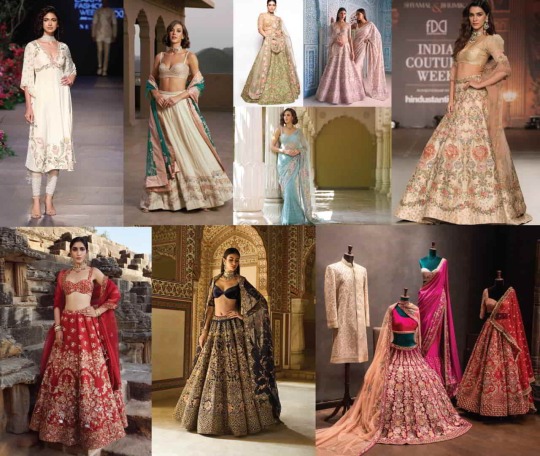
Why These Designers Are Shaping Hyderabad’s Fashion Landscape in 2025
What connects these varied designers is their dedication to quality, innovation, and cultural amalgamation. From heritage-driven bridal couture to daring contemporary menswear, Hyderabad’s fashion scene in 2025 is more dynamic, inclusive, and trendsetting than ever. Each of these brands offers something distinctive — whether it’s sustainable methods, modern tailoring, or creative artistry.
Conclusion: Top fashion designers in Hyderabad are enhancing the city’s style narrative with each new collection. The clothing stores in Hyderabad today are not merely trendsetters but storytellers — employing textiles, embroidery, and design to express individuality and intention. Whether you’re preparing for your special day, a festive celebration, or simply honoring your personal style, Hyderabad’s vibrant designer community provides just the aesthetic you seek.
#best clothing stores in hyderabad#designers in hyderabad#fashion designers in hyderabad#best designers in hyderabad
0 notes
Text
0 notes
Text
0 notes
Text
0 notes
Text
0 notes
Text
Discover The Top Designer Boutiques in Gurgaon
Discover the best designer boutiques in Gurgaon – From elegant bridalwear to trendy everyday fashion, Gurgaon’s boutique scene offers something for every style lover. Explore the best local designers creating unique pieces that blend tradition, luxury, and modern flair.
0 notes
Text
0 notes
Text
0 notes
Text

Explore the Best Designer Boutiques in Chandigarh
Chandigarh’s fashion scene is a perfect blend of elegance, innovation, and cultural flair—and its designer boutiques are proof. From bespoke bridal wear to everyday chic, explore the best designer boutiques in Chandigarh that are redefining contemporary Indian fashion. Whether you're searching for something traditional or trendsetting, these boutiques offer curated collections, premium craftsmanship, and personalized style like no other.
0 notes
Text
Exploring the Timeless Elegance of Saree Draping Styles Across India
The saree is not just a garment in India; it is a cultural symbol, an art form, and a timeless statement of grace. Across the diverse regions of India, the saree takes on numerous forms, styles, and meanings, with each state adding its unique twist to the draping techniques and fabric choices. From traditional styles that have been preserved for centuries to modern adaptations, saree wearing is both versatile and vibrant, catering to various occasions, climates, and tastes. Here, we delve into some of the most popular different types of saree wearing styles from different parts of India, each reflecting the culture and heritage of its region.
1. Nivi Style (Andhra Pradesh)
The Nivi style, originating from Andhra Pradesh, is perhaps the most commonly recognized saree draping method in India and globally. It involves tucking the saree around the waist, with pleats formed at the center. The pallu, or end of the saree, is draped over the left shoulder, creating a graceful look. This style is popular due to its simplicity and ease, making it an everyday choice for Indian women and a classic choice for formal occasions.
2. Bengali Style (West Bengal)
The Bengali saree style is known for its elegant simplicity and distinct draping method. Traditionally worn without pleats at the waist, the saree is wrapped around the body and then draped over the left shoulder, with the end pulled back over the right shoulder in a fan-like arrangement. This style often involves heavy cotton or silk sarees with bold red borders, symbolizing tradition and heritage. The Bengali saree drape is commonly seen during Durga Puja and Bengali weddings, embodying the spirit of Bengal.
3. Gujarati Style (Gujarat)
Popular in Gujarat and Maharashtra, the Gujarati saree drape is known for its unique way of displaying the saree’s intricate pallu. The saree is tucked in at the back and brought to the front, with pleats tucked at the waist. The pallu is then draped from the right shoulder and brought across the chest to the back, creating a distinctive “V” shape. This style is often used in traditional ceremonies, especially by brides, as it highlights the pallu’s embroidery and motifs.
4. Maharashtrian Nauvari Style (Maharashtra)
The Nauvari saree, commonly worn by women in Maharashtra, is known for its unique draping style that resembles the look of dhoti pants. This saree is traditionally nine yards long (hence the name “Nauvari,” meaning nine yards) and requires no petticoat underneath. The saree is wrapped between the legs, allowing greater ease of movement, which was especially beneficial for the women warriors of Maharashtra’s history. The Nauvari saree is often adorned during cultural events, folk dances, and religious ceremonies, showcasing Maharashtra's vibrant culture.
5. Madisaru Style (Tamil Nadu)
Madisaru is a traditional saree draping style seen among Tamil Brahmin women, especially during festivals and weddings. This style uses a nine-yard saree and resembles a dhoti-pant drape similar to the Maharashtrian style. Traditionally, the saree is wrapped in a way that allows the lower half to resemble pants, offering ease of movement. Madisaru sarees are worn by women for religious ceremonies and symbolize cultural reverence, particularly within the Tamil Iyengar and Iyer communities.
6. Coorgi Style (Coorg)
The Coorgi or Kodagu saree draping style is native to the Coorg region in Karnataka. Known for its unusual way of tying the pleats at the back and bringing the pallu over the shoulder from the back to the front, it’s a unique style that beautifully showcases the saree’s pallu. Traditionally worn by Coorg brides, this style is practical and elegant, symbolizing the rich heritage and customs of the Kodava people.
7. Assamese Mekhela Chador (Assam)
The Mekhela Chador from Assam is a two-piece saree that is worn with an entirely different approach than a traditional saree. The bottom piece, known as the mekhela, is draped like a skirt, while the chador, the upper piece, is tucked in at the waist and wrapped around the body. The Mekhela Chador is made from Assam’s famous silk, especially Muga and Pat, which are known for their exquisite texture and durability. This outfit is commonly worn during Bihu festivals and Assamese weddings, showcasing Assam’s textile artistry.
8. Kerala Kasavu Style (Kerala)
The Kerala Kasavu saree, commonly worn during festivals like Onam and Vishu, features a unique draping style that emphasizes simplicity and elegance. The saree is typically white or cream with a golden border and draped with minimal pleats at the front. The pallu is elegantly draped over the left shoulder. This style is popular among Malayali women and is worn to represent purity and tradition, especially during cultural events and religious ceremonies.
9. Goan Kunbi Style (Goa)
The Kunbi saree style, traditionally worn by the tribal women of Goa, is draped in a very practical and unique way. It is worn without pleats and tied over the shoulder with a knot, creating a comfortable fit that is ideal for daily chores. This style has recently been revived by designers who incorporate it into modern saree styles, highlighting Goa’s rich cultural heritage.
10. Modern Butterfly Style
The Butterfly style, also called Bollywood style, is a modern adaptation of the classic Nivi drape. It’s characterized by pleated, narrow front pleats and a very slim, often embellished pallu. This drape is popularized by Bollywood actresses and designers and is a common choice at red-carpet events or high-profile weddings. It adds a glamorous touch to the traditional saree, showcasing the curves and elegance of the wearer.
11. Rajasthani and Marwari Style (Rajasthan)
In Rajasthan, the saree is draped with a focus on modesty and grace. The Rajasthani style involves wrapping the pallu around the head as a ghoonghat (veil) to signify respect and traditional values. The pleats are tucked in at the waist, with the pallu draped over the right shoulder. Bright colors, mirror work, and bandhani (tie-dye) patterns are commonly featured, and this style is frequently seen at Rajasthani weddings and festivals.
12. Odisha Style (Odisha)
The Odisha saree drape, also called the "Sambalpuri" style after Odisha’s famous Sambalpuri sarees, has a unique twist to the classic drape. It features box-pleats at the front and often involves intricate ikat patterns. The saree is draped with the pallu across the front, giving it a distinguished appearance. This style is deeply tied to Odisha’s cultural heritage and is especially popular during festivals and weddings.
Conclusion
Each saree draping style tells its own story, steeped in the cultural and historical fabric of India’s regions. From the graceful Nivi style to the distinct Assamese Mekhela Chador, these variations reflect the diverse ways in which women across India have adapted the saree to their lifestyles and traditions. As these styles continue to evolve, they allow both tradition and modernity to blend seamlessly, ensuring that the saree remains an iconic piece of clothing that transcends time and geography. Whether for everyday wear, festive occasions, or modern styling, the saree endures as a symbol of elegance, adaptability, and identity for millions
0 notes
Text
A Comprehensive Guide to Stylish Suits Designs for Ladies
The modern woman is a powerful blend of ambition, grace, and sophistication, and nothing encapsulates these qualities better than a well-tailored suit. Women's suits have come a long way from their masculine roots, evolving into garments that are not only functional but also versatile and fashionable. Whether for business meetings, casual outings, or formal events, a stylish suit can make any woman feel empowered and confident.
In this blog, we’ll explore various suit designs for ladies, covering the different styles, cuts, fabrics, and how to choose the right one for different occasions.
1. Classic Tailored Suits
The classic tailored suit remains a timeless choice for women who want a sleek, professional look. Typically, this design features a single-breasted jacket with slim, straight-leg trousers. The clean lines and structured silhouette give an aura of authority and professionalism, making it ideal for business settings.
Key Features:
Single-breasted jacket with one or two buttons
Slim-fit trousers or pencil skirts
Solid, neutral colors like black, navy, and grey
Wool, cotton, or tweed fabrics for structure
Styling Tips: Pair a classic tailored suit with a crisp white shirt or silk blouse for a polished office look. For a more modern twist, opt for a slim-cut jacket and high-waisted trousers.
Who is it for? This suit is perfect for professional women in corporate environments or those attending formal business events. It’s all about understated elegance and timeless sophistication.
2. Pant Suits with Bold Prints and Colors
Gone are the days when women’s suits were limited to neutral tones. Bold prints and vibrant colors have made their way into the world of formalwear, offering a playful alternative to the traditional suit. From geometric patterns to florals and bright hues, these suits are ideal for women who aren’t afraid to make a statement.
Key Features:
Bold patterns such as stripes, checks, or florals
Vibrant colors like red, electric blue, emerald green, or even pastels
Wide-leg or straight-cut trousers
Mix of textures (e.g., velvet or silk) for added flair
Styling Tips: When wearing a bold suit, let the outfit speak for itself. Opt for minimal accessories and a solid-colored blouse to balance out the look. Complete the ensemble with heels or sleek loafers for a polished finish.
Who is it for? If you’re someone who loves to stand out and make a fashion statement, this type of suit is for you. Perfect for networking events, creative industry meetings, or stylish evening functions, bold suits exude confidence and creativity.
3. The Power Suit
The power suit is designed for women who want to own the room. Characterized by sharp tailoring, padded shoulders, and a strong, structured silhouette, it’s an embodiment of authority and confidence. Power suits are typically monochromatic, with black, navy, and charcoal being the most popular choices, though white and jewel tones are also becoming trendy.
Key Features:
Double-breasted jackets with sharp shoulders
Structured fit, often slightly oversized for a masculine touch
High-waisted trousers, sometimes with a flare or straight-leg cut
Luxe fabrics such as wool blends or high-end cotton
Styling Tips: The power suit works best when styled with bold, minimal jewelry. A sleek hairdo and pointed-toe heels or ankle boots enhance the authoritative look. Choose a solid color shirt or a turtleneck underneath for a more streamlined appearance.
Who is it for? The power suit is ideal for executives, women in leadership roles, or anyone attending high-level meetings where commanding presence is essential. It’s also perfect for women who want to project strength and elegance.
4. Cropped Blazers and Wide-Leg Trousers
The combination of a cropped blazer and wide-leg trousers is a modern take on traditional suiting. This pairing gives a youthful yet sophisticated vibe, balancing between chic and casual. Cropped blazers accentuate the waist, making them an excellent option for those who want to highlight their figure while maintaining a professional look.
Key Features:
Cropped or slightly shorter blazer that hits just above the waist
Wide-leg trousers that create movement and offer comfort
Lightweight fabrics like linen or cotton for a more relaxed feel
Can come in neutral tones or playful colors
Styling Tips: Since the blazer is cropped, high-waisted trousers are essential to elongate the legs and create a balanced silhouette. A fitted top or bodysuit underneath helps to keep the look polished. Finish the outfit with block heels or platform shoes for a trendy, fashion-forward look.
Who is it for? This style is great for women in creative industries, freelancers, or those who work in less formal business settings. It’s a blend of comfort and style, making it suitable for a day-to-night transition.
5. Tuxedo Suits for Women
The tuxedo suit, traditionally worn by men at formal events, has been beautifully adapted for women, creating a stunningly sleek option for formal occasions. Women's tuxedo suits usually feature satin lapels, sharp lines, and a minimalist aesthetic. Though traditionally black, they are now available in various colors like white, burgundy, and navy.
Key Features:
Satin lapels and trims, often in contrasting colors
Slim, fitted trousers or tapered legs
A tailored, form-fitting jacket with a single button closure
Velvet or wool fabrics for a luxurious feel
Styling Tips: Pair the tuxedo suit with a silk or lace camisole for a hint of femininity or go bold with just the jacket buttoned up for an edgier look. Black stiletto heels and a sleek clutch can complete the ensemble.
Who is it for? The tuxedo suit is perfect for black-tie events, galas, or any formal occasion where you want to stand out without sacrificing elegance. It’s a power move that exudes sophistication and chic confidence.
6. Skirt Suits
Skirt suits offer a more feminine twist on the traditional suit, combining tailored jackets with pencil skirts or A-line skirts. This style is ideal for professional environments where a dressier, polished look is required. Skirt suits are versatile and can be worn with various tops, from silk blouses to crisp button-downs.
Key Features:
Tailored blazers paired with pencil skirts or A-line skirts
Knee-length skirts for a professional look
Neutral tones like grey, beige, or black for a classic appearance
Lightweight, breathable fabrics such as wool blends or crepe
Styling Tips: Skirt suits are best paired with closed-toe pumps or block heels. Opt for a blouse with a bit of texture or ruffle to add femininity. Keep the accessories minimal and elegant, such as pearl earrings or a delicate necklace.
Who is it for? Skirt suits are perfect for corporate women, those working in finance, law, or any industry where formal attire is the norm. It offers a blend of tradition and modern professionalism.
7. Casual Suits
For those who want to look put-together but maintain comfort, casual suits are a fantastic option. These suits are less structured and often made from softer materials like jersey, linen, or cotton blends. The relaxed fit makes them ideal for informal work settings or casual outings.
Key Features:
Relaxed, unstructured blazers
Loose-fitting trousers or jogger-style bottoms
Light, breathable fabrics like linen or jersey
Soft, muted tones or playful prints
Styling Tips: Casual suits pair well with sneakers or loafers for an easygoing, chic look. A simple T-shirt or turtleneck underneath keeps the outfit relaxed but stylish.
Who is it for? Casual suits are ideal for freelancers, remote workers, or anyone in a creative field where formal attire isn’t necessary. They’re also great for off-duty days when you still want to look fashionable but feel comfortable.
Conclusion
Women’s suits have become a symbol of power, confidence, and versatility in the modern wardrobe. Whether you prefer the timeless elegance of a classic tailored suit, the boldness of vibrant prints, or the sleek sophistication of a tuxedo suit, there’s a style for every woman and every occasion. The key is to find a suit that complements your body type, aligns with your personality, and suits the occasion. Whether you're in the boardroom, at a formal event, or enjoying a casual day out, the right suit can make all the difference in how you present yourself to the world.
0 notes
Text
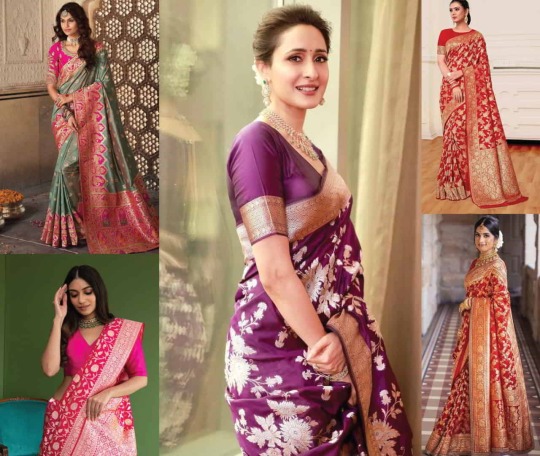
Discover the beauty of different types saree wearing through diverse draping styles like Nivi, Bengali, Gujarati, and more. Each style reflects regional elegance, offering unique charm and cultural significance.
0 notes